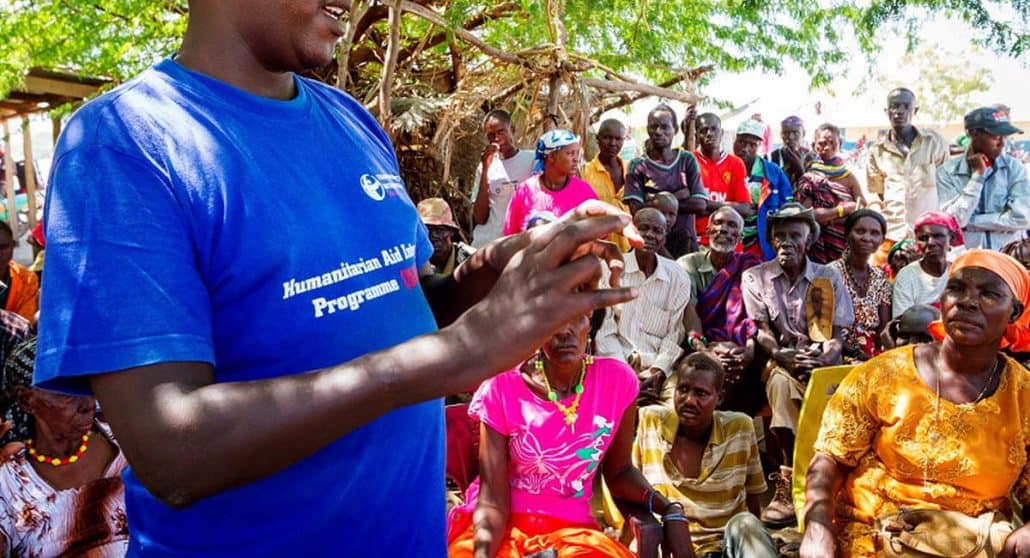Earthquakes and hurricanes devastating parts of Mexico and the Caribbean; flooding in Bangladesh, India, Nepal, and Pakistan affecting more than 41-million people; refugee crises in Syria and Myanmar; protracted crises in Afghanistan, Chad and the Central African Republic; and more than 20-million people facing starvation and famine across Nigeria, Somalia, South Sudan and Yemen in the worst humanitarian crisis since World War Two…
Around the globe, tens of millions of people need humanitarian assistance from governments, humanitarian aid agencies, and the UN.
Humanitarian assistance financing has been rising year on year from around US$16.7-billion in 2010 to $27.3-billion in 2016. That’s a great step towards ensuring that essential help gets to those most in need after natural disasters or conflict.
But even when lives are at stake and people at their most vulnerable, corruption and other abuses are not uncommon.
Driven to steal rather than to help
Most international humanitarian operations take place in fragile states, with weak rule of law, inefficient or dysfunctional public institutions, and a limited ability to prepare for and prevent humanitarian disasters. Every country requiring a humanitarian response this year scores badly on Transparency International’s (TI) Corruption Perceptions Index (CPI) 2016.
There are no specific figures on how much aid is lost to corruption, but it undermines humanitarian efforts in various ways.
Bribery and extortion distort decision-making, and increase the cost of goods and services. The amount of aid reaching the most vulnerable is reduced, or its quality is diminished.
Other forms of corruption – like nepotism and cronyism in the hiring of staff, or bias or political interference in the distribution of relief – can occur even when financial accounts seem in order. There can even be extortion of sexual favours in return for aid, and intimidation of staff so they’ll turn a blind eye to malfeasance.
The humanitarian aid sector has been confronting the challenge of corruption for over a decade but it is clear that greater investment in tackling corruption is needed. More specifically, key actors in the humanitarian sector – donor governments, the UN, humanitarian agencies, and host governments – need to become stronger and work more collectively in certain areas.humanitarian agencies, much of th
- Senior management and leaders should openly discuss and address the possibilities of corruption in the field and produce clear anti-corruption strategies. These should include socio-political-economic analysis of complex environments, and careful mapping of external and internal corruption risks. This should be incorporated into emergency preparedness and wider risk assessment frameworks before the next crisis begins.
- Donor governments and humanitarian agencies should increase positive incentives to transparently analyse risks and report corruption. They must develop shared approaches for managing the threat of corruption. Whistleblower protection should be strengthened. Resources need to be set aside for rolling these programs out in the field and providing ongoing training.
- Governments receiving aid should develop anti-corruption laws, including those specifically covering humanitarian assistance. Policies on recruitment, procurement, taxation and customs for the humanitarian sectors should be based on best practice, and be designed in consultation with relevant UN and NGO forums.
Partnerships are key. International organisations should deepen the support they give to national NGOs, including ones providing organisational and operational capacity support, and identify opportunities for shared learning regarding good practice in managing corruption risks.
Links to additional resources
- CREATE project Synthesis Report
- CREATE project case studies – Afghanistan, Guinea, Lebanon and Somalia
- TI Handbook on Preventing Corruption in Humanitarian Operations
- Online training course – Preventing Corruption in Humanitarian Aid (developed by TI Norway and the International Federation of the Red Cross/Red Crescent Movement)
• First published on Transparency International. Photo from TI Kenya.

